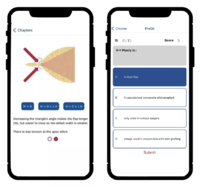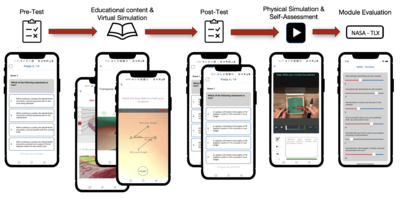
This module allows surgical practitioners to become more confident and competent in V-Y Advancement Flap by utilizing basic geometry to either recruit tissue or redistribute it to achieve some form of reconstruction – primarily for releasing scars and closing defects in Sub-Saharan Africa (SSA). The situation in Rwanda is of grave concern as only two trained plastic surgeons and three plastic surgeon residents treat 13.28 million people.
Currently, Rwanda has a surgical workforce of fewer than 2 surgeons, anesthesiologists, and obstetricians (SAOs) per 100,000 population, and investing in the training and education of the surgical workforce is the best way to increase the number of surgical interventions in Rwanda. V-Y advancement is a random-pattern local flap that is useful for reconstructing small- to medium-cutaneous defects. It is most commonly utilized for the reconstruction of facial defects resulting from minor traumas and cutaneous malignancies.
Learning Objectives[edit | edit source]

This training module combines virtual and physical simulation in order to impart knowledge and skills for clinical competency in V-Y advancement. Within the module, learners will direct themselves through a comprehensive curriculum covering the indications, design, complications, and surgical techniques relevant to performing V-Y advancement. After successfully completing the module, learners will:
- Understand the function of and indications for V-Y advancement
- Understand the principles of V-Y advancement design
- Describe and implement the stepwise surgical technique for performing z-plasty
- Understand the complications of V-Y advancement and how to avert them
Syllabus[edit | edit source]
Educational content[edit | edit source]
- V-Y Advancement Summary
- Think like a Reconstructive Surgeon
- Flap Classifications
- Virtual simulation
- Post-module assessment
- Physical simulation & self-assessment
Module Evaluation[edit | edit source]
Description[edit | edit source]
The V-Y advancement training module is contained within the free and easy-to-use Amosmile smartphone application. Begin using the AmoSmile app by creating your personal account. Next, select the V-Y advancement module from the Module Menu.
Within the V-Y advancement module of the AmoSmile app, begin by completing a 20-question pre-module assessment to evaluate your baseline knowledge.
Review the carefully curated educational content contained within the V-Y advancement module. This includes text, diagrams, and interactive graphics pertaining to the function, design, indications, complications, and surgical technique of V-Y advancement.
After mastering the provided educational content, put your newly acquired knowledge to task using the virtual simulator. Here, you will be asked to perform a virtual V-Y advancement within a simulated clinical scenario.

After completing the virtual simulation, complete an 80-question post-module assessment to evaluate your readiness to proceed in the course. A minimum passing score of 80% accuracy is required to qualify for continuation to the physical simulator.
Complete the video tutorial for constructing your physical simulator. You will then be guided through a simulated clinical scenario using your physical simulator. Stepwise self-assessment questions are integrated into the simulation to provide a performance feedback loop toward mastery learning. After completion, your score will be displayed alongside targeted guidance for additional review. Repeat the physical simulation until a perfect self-assessment score is achieved. You will then receive a Certificate of Completion, marking the conclusion of the module.
Along with the pre/post assessments, and virtual simulation self-assessments with directed learning feedback, learners must complete the SURG-TLX tool to aid in our continued development of this and other modules. Further, learners will complete the physical simulator with the OSATs and CCAT assessment tools and these tools will be used in conjunction with case reports for clinical validation.
The learning design of the application, partnered with a physical simulator, is a perfect conduit to evaluate a learner’s clinical competency. Our system divides learning into four hierarchical processes that mirror Miller's pyramid: knowledge, application of knowledge, clinical skills competency, and clinical performance. This instructional design methodology is echoed across all four modules and was chosen for its flexibility. Our theory is utilizing a strong instructional design methodology, with adult learning theories that will yield a positive clinical competency output through ubiquitous learning. The creation of both virtual and physical simulators provides a lifelike example of a clinical encounter where a novice learner can make mistakes and learn from past experiences without endangering patients. Each module course begins with an MCQ section with a threshold of 80% for passing (knowledge), a virtual simulation (application of knowledge), post-evaluations with self-directed feedback (clinical skills), and the final physical simulator (clinical performance).